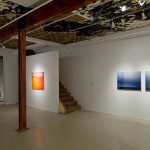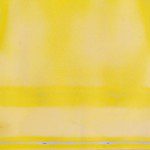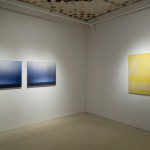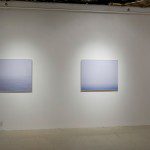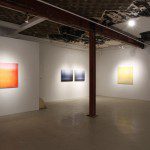Text by Amber Berson
A viewer standing in front of the work of Henri Venne might feel simultaneously at home and confused. A seamless merging of photographic and painterly elements, Venne’s images at once conjure a sense of familiarity and uncertainty. It is within this liminal space that the viewer experiences the work.
Photography and painting do not have the same effect on the viewer. The former suggests presentation, the latter representation, yet both are inherently second hand experiences. The difference lies in the way we choose to read photographs as a sort of truth or evidence. We come to photography with (a false sense) of verity, often choosing to believe in the ‘evidence’ before our eyes; we are inherently less gullible in the case of paintings at recognizing the artists’ touch to the canvas. Walter Benjamin, in A Short History of Photography, writes
No matter how artful the photographer, no matter how carefully posed his subjects, the beholder feels an irresistible urge to search such a picture for the tiny spark of contingency, of the Here and Now, with which reality has so to speak seared the subject.1
Benjamin spoke of a photograph with clearly defined subject matter, assuming that photography is closer to the truth than painting is by virtue of being less altered. For Henri Venne, whose work lies at the intersection of the two, there is no clear truth. In fact, it is the liminal space between what we as viewers see and what we understand from the image that holds power in his work. Titled Somewhere in Between, the series is a continuation of the artist’s mixed relationship to photography and painting, forcing the viewer to confront the image as an unreliable narrator. Obscured landscapes occupy the partially photographic, partially painted work, however the material has been altered to the point of no return. Unclear, but not misrepresentative, Venne’s art conjures distant memories in the viewer, those of possibilities rather than actualities. The result, still clearly a landscape image, refuses full access to the viewer through easily recognized visual cues. Instead, references to minimalist painting lead us to a deeper contemplation and reflection, and ultimately we lose ourselves in the work.
Landscapes often fall back on narrative, yet Venne’s work allows the viewer to write their own into the frame. Venne’s images work as mnemonic devices for a memory too distant to access – the images both familiar and foreign – a perfect canvas for transcribing our individual narratives.
1. Walter Benjamin, “A Short History of Photography,” in The Archive, ed. Charles Merewether. (London/ Cambridge, Massachusetts: Whitechapel/ The MIT Press, 2006), 58.





